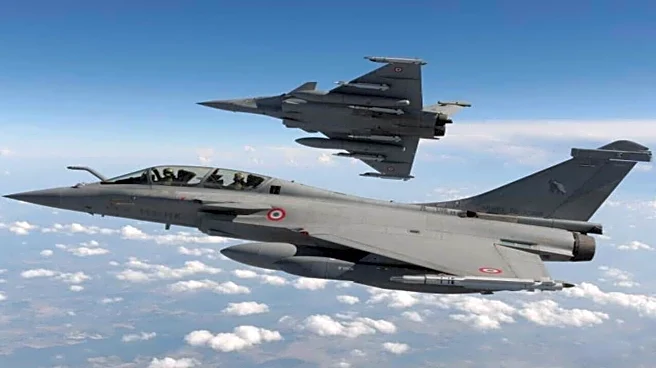Earlier today, the Indian Navy formally inducted INS Mahe, a 78-metre anti-submarine warfare shallow water craft built entirely by Cochin Shipyard with over 80 per cent indigenous content. The vessel represents the vanguard of a fleet transformation designed to address a strategic vulnerability that has long haunted Indian defence planners: the inability to effectively patrol and control the littoral waters where most threats actually originate.
With a 7,516 km coastline and an exclusive economic zone spanning 2.3 million square kilometres, India’s maritime frontier stretches beyond what the Navy can credibly defend with existing platforms. The blue economy, including fisheries, shipping, and offshore energy, generates approximately 4 per cent
of GDP and sustains 4 million livelihoods along its coast. Yet this economic lifeblood remains vulnerable to submarine threats, illegal fishing operations, and potential Chinese naval incursions. INS Mahe was designed precisely to redress that imbalance.
But why does a 78-metre vessel warrant such strategic significance? Because conventional warships cannot fight where most battles will occur. India’s sophisticated destroyers and frigates operate best in deep water; they cannot venture into the confined, shallow littoral zones where submarines lurk and where coastal security actually matters. This created a dangerous gap. Pakistani submarines have become increasingly capable, and China is reportedly preparing to deploy advanced platforms into the Indian Ocean.
INS Mahe solves this problem through elegant design. The ship draws only 2.7 metres, shallow enough to operate where traditional combatants cannot. Yet it packs a lethal capability: advanced sonar systems, anti-submarine rockets, torpedoes, and a 30 mm naval gun. More importantly, its reduced acoustic signature makes it the “silent hunter” the Navy explicitly describes. When pursuing submarines in confined waters, stealth becomes a tactical advantage.
The vessel carries 57 personnel and can sustain itself at sea for 14 days, covering a distance of 1,800 nautical miles. These specifications may sound technical; strategically, they mean India can finally maintain a persistent presence in littoral zones that previously enjoyed impunity from larger naval threats.
Scaling the Ambition
A single vessel changes very little. The significance lies in multiplication. Eight Mahe-class ships are under construction at Cochin Shipyard, with seven more planned for delivery through 2027. Simultaneously, 11 next-generation offshore patrol vessels are being built at Goa Shipyard and Garden Reach Shipbuilders. The Indian Coast Guard aims to target 200 boats and 100 aircraft by 2030, up from the current strength of 151 vessels.
By 2035, India aims to deploy between 175 and 200 warships compared to roughly 132 today. This represents transformation at scale. Pakistan is set to field eight air-independent propulsion submarines beginning in 2026. China operates three aircraft carriers and nuclear submarines with capabilities that India can only match in terms of quantity and technological innovation. Fleet expansion addresses both realities simultaneously: spreading India’s limited resources across more platforms whilst focusing investment on vessels purpose-built for littoral dominance.
The industrial dimension deserves emphasis. Cochin Shipyard delivered INS Mahe with 80 per cent indigenous content, not through brute force engineering but through deliberate mastery of complex warship construction. This breaks with India’s historical dependence on foreign technology transfers and vastly reduces foreign exchange costs. Where foreign acquisition requires years of diplomatic negotiation and technology disputes, indigenous production permits sustained, multi-year construction schedules to meet the ambitious fleet targets demand.
But superior hardware alone guarantees nothing without an integrated command architecture. The National Maritime Domain Awareness project transforms individual sensor data into a collective operational picture. Already, 46 coastal radar stations provide coverage across India’s 11,098 km coastline. Satellite constellations provide persistent monitoring capabilities even in adverse weather conditions. When INS Mahe deploys, sonar contacts are instantaneously fed into information fusion processes that cross-reference satellite imagery, vessel tracking data, and intelligence assessments.
The Geopolitical Pivot
INS Mahe embodies a larger strategic reorientation Modi has pursued since 2015: transforming India from a passive maritime observer into an active guarantor of regional security. India’s SAGAR doctrine positioned the nation as a cooperative partner to smaller littoral states. The newer MAHASAGAR framework extends this across the Indo-Pacific—explicitly addressing China’s expanding presence through transparent partnerships rather than exclusive spheres of influence.
Can India actually execute this ambition? The mathematics remain daunting. China is building submarines and warships at a rate that dwarfs Indian production. Yet the question misframes India’s strategy. The Navy is not competing for superiority but rather pursuing sufficiency; enough capability to make coercive action prohibitively costly for any adversary contemplating operations in Indian waters.
INS Mahe embodies that commitment. It stands as a symbol of India’s decision to invest in capabilities that protect 250 million coastal residents, a $1 trillion shipping industry, and a blue economy rapidly becoming central to national prosperity.
On Monday’s commissioning day, the vessel sailed from Kochi bearing the Urumi, the flexible sword from Kalaripayattu, on its crest. It symbolises: agility, precision, lethal grace. These qualities, multiplied across 15 sister ships and integrated into a sophisticated maritime domain awareness architecture, will define how India defends contested waters for decades to come.
Views expressed in the above piece are personal and solely those of the writer. They do not necessarily reflect News18’s views.





/images/ppid_a911dc6a-image-176397009449929564.webp)



/images/ppid_a911dc6a-image-176386353398331663.webp)






/images/ppid_a911dc6a-image-176375643089066506.webp)